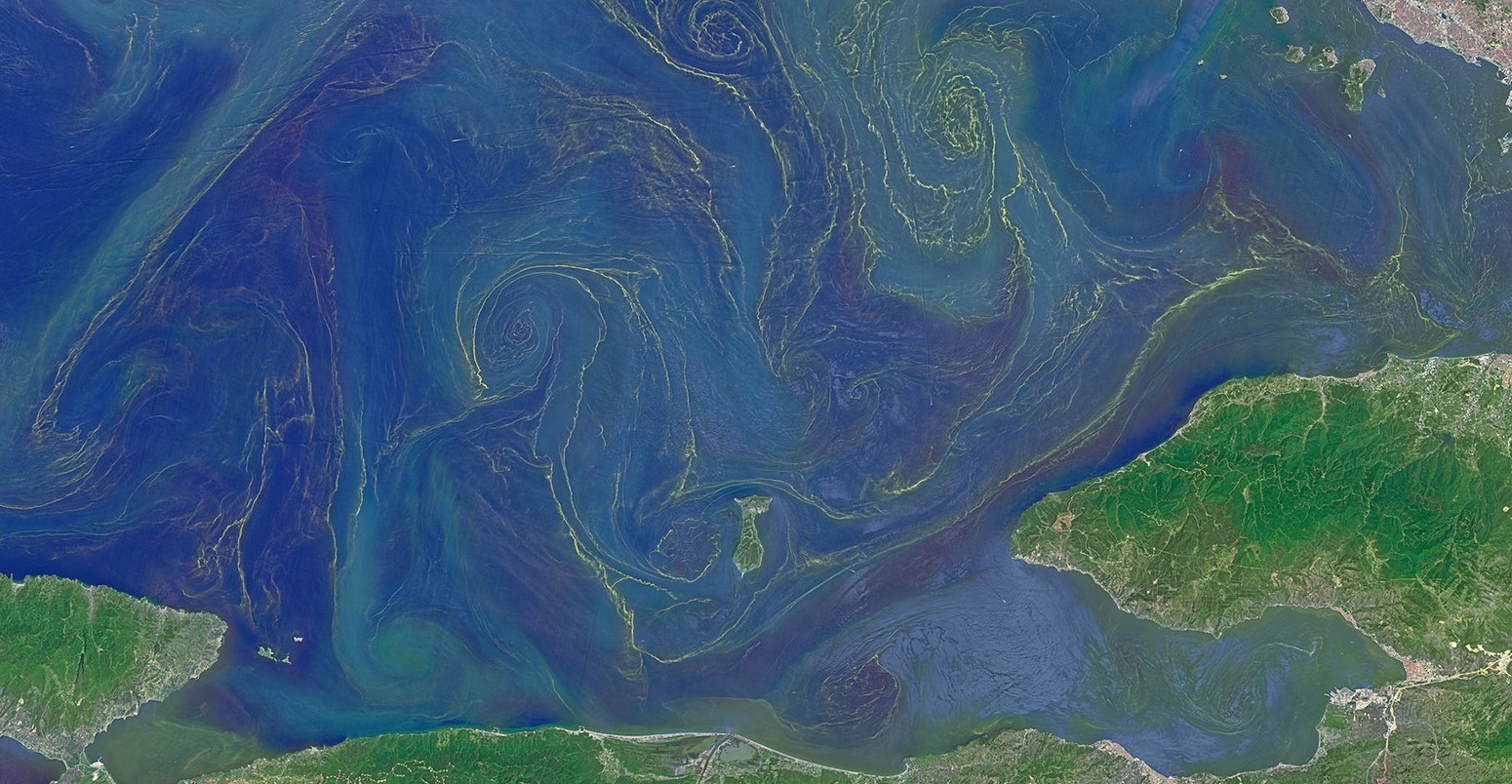Warming oceans less able to store organic carbon, study suggests
Robert McSweeney
01.06.15Robert McSweeney
06.01.2015 | 3:57pmThe oceans’ ability to store carbon may be reduced by global warming, a new study suggests. The research finds that warmer ocean temperatures limit how much organic carbon is being transported into the deep ocean.
This could cause a positive feedback loop, the authors suggest, with carbon storage in the oceans reducing as global temperatures rise further.
Reduced carbon storage
The Intergovernmental Panel on Climate Change estimates that since the 1970s, oceans have taken up more than 90 per cent of the heat trapped by greenhouse gases. A warming ocean has implications for sea level rise, but also for its ability to store organic carbon, a new study in Proceedings of the National Academy of Sciences finds.
The research measures how much carbon is being transported via the biological pump. This is the way carbon dioxide dissolved in the surface ocean is converted into organic carbon and sinks into the deep ocean where it can be stored for hundreds of years and beyond.
The researchers find that less organic carbon sinks to the deep ocean in warmer waters. This leaves more carbon dissolved in the surface ocean, which can then return to the atmosphere as carbon dioxide.
The findings suggest that as the oceans warm up as a result of manmade climate change, they would be less able to remove carbon dioxide from the atmosphere. As the study’s lead author, Dr Chris Marsay, tells us:
“This would potentially result in reduced storage of carbon dioxide by the oceans, effectively acting as a positive feedback mechanism, with less atmospheric carbon dioxide being removed by the oceans.”
Transporting carbon to the deep ocean
Microscopic plants called ‘phytoplankton’ take carbon dioxide from the ocean as they photosynthesize in the sunlit surface waters. This process converts carbon dioxide into organic carbon. Some of this phytoplankton will sink into the deeper ocean or be eaten by other organisms, which sink themselves when they die. This process is the ‘biological pump’.
The study measures the amount of organic carbon sinking through the ocean. The researchers took measurements throughout the top 700m of ocean at four locations in the Atlantic, and combined their results with an earlier study from the Pacific.
When the researchers plotted their results, they found that the amount of organic carbon they collected was lower in areas where the water was warmer. The chart below shows how the ratio of sinking carbon to dissolving carbon drops as temperature increases.
The ratio of sinking carbon to dissolved carbon, plotted against temperature. The circles and triangles show results from the Atlantic and Pacific Oceans (respectively) and are labelled with the name given to each measurement site. The equation of the trend line is given in the top right-hand corner, along with the correlation coefficient (r2) and p-value (which shows the relationship is statistically significant). Source: Marsay et al. ( 2014)
The results suggest that in warmer water the phytoplankton and organisms are more likely to dissolve in the upper ocean before they can sink.
When they dissolve, the carbon dissolves with them, and as the carbon stays in the surface ocean, it can more easily be released back into the atmosphere.
How sinking carbon is measured
The researchers measure sinking organic carbon by collecting it in sediment traps called Pelagra. Dr Marsay describes to us how they work:
“Sediment traps act in a similar way to a rain-gauge. They typically consist of a funnel or cylinder that is held vertically in the water, with the top end open to catch material sinking through the water column and a sample cup connected to the bottom end to store the material for analysis.”
Traditional traps are usually tethered to a float at the surface or to the sea floor, which limits the range of the ocean they can sample. This has been “a problem for oceanographers for a long time”, says Marsay.
But the Pelagra traps can be programmed to sink to a particular depth. This means they can collect samples from anywhere in the water column, according to Marsay, and this study is the first to use direct ocean measurements to make the link between temperature and sinking organic carbon.
Pelagra sediment trap. Source: Chris Marsay
The next step, Marsay tells us, is to use the new traps for measurements in other oceans, to see how the rates of sinking carbon vary in different conditions around the world.
Main image: Phytoplankton blooms in the Sea of Marmara.
Marsay, C. M. et al. (2014) Attenuation of sinking particulate organic carbon flux through the mesopelagic ocean, Proceedings of the National Academy of Sciences, doi: 10.1073/pnas.1415311112




